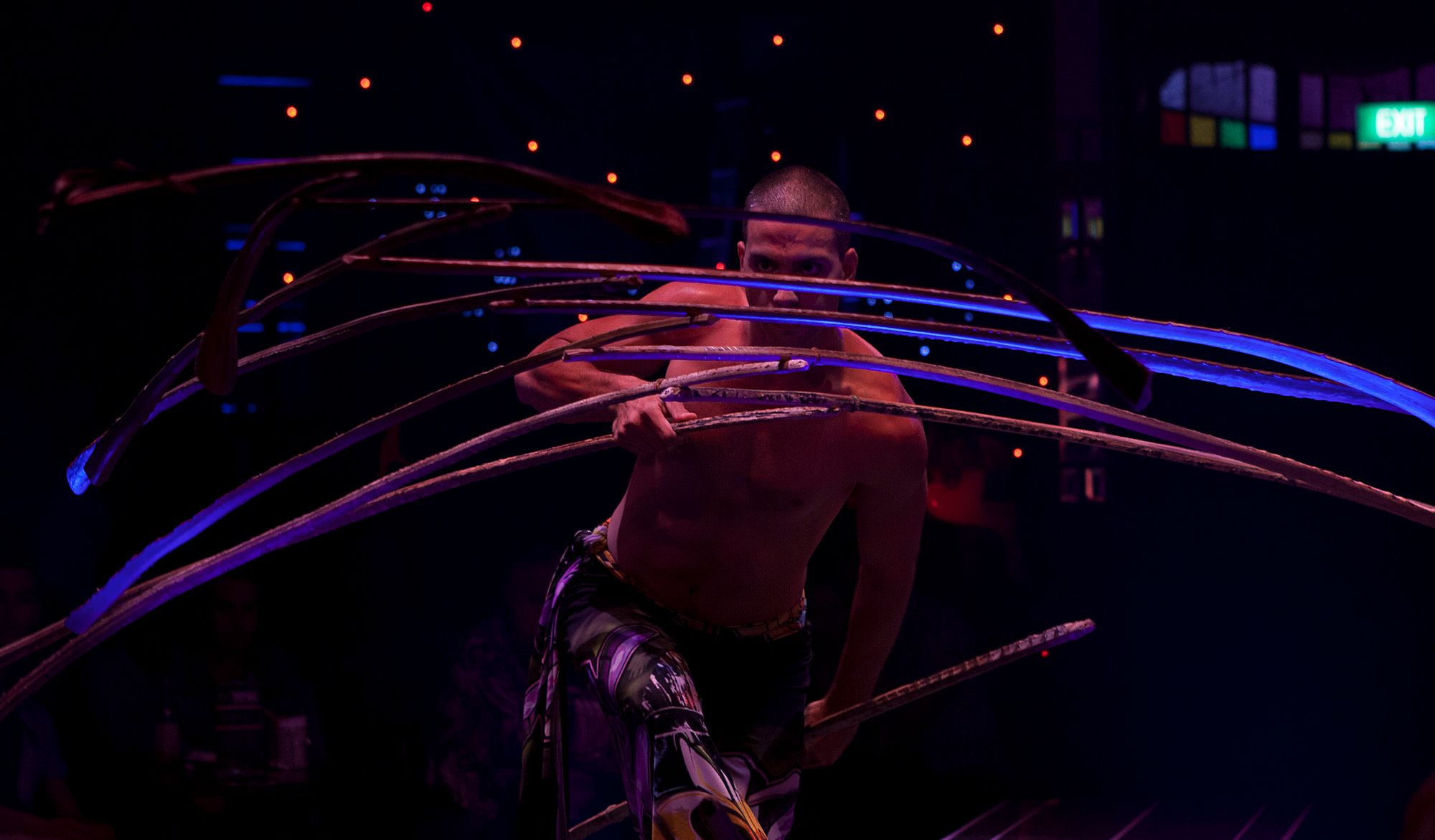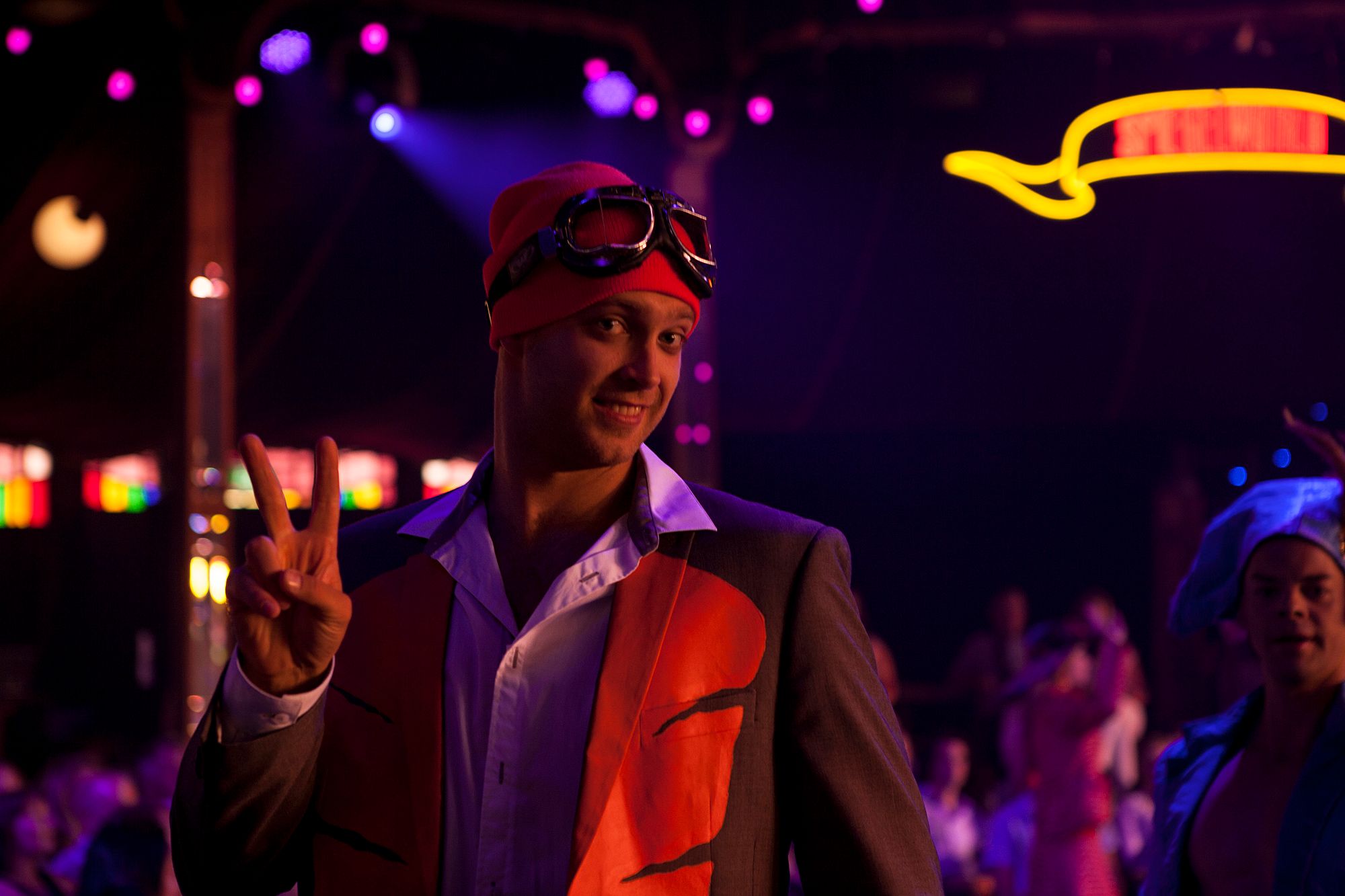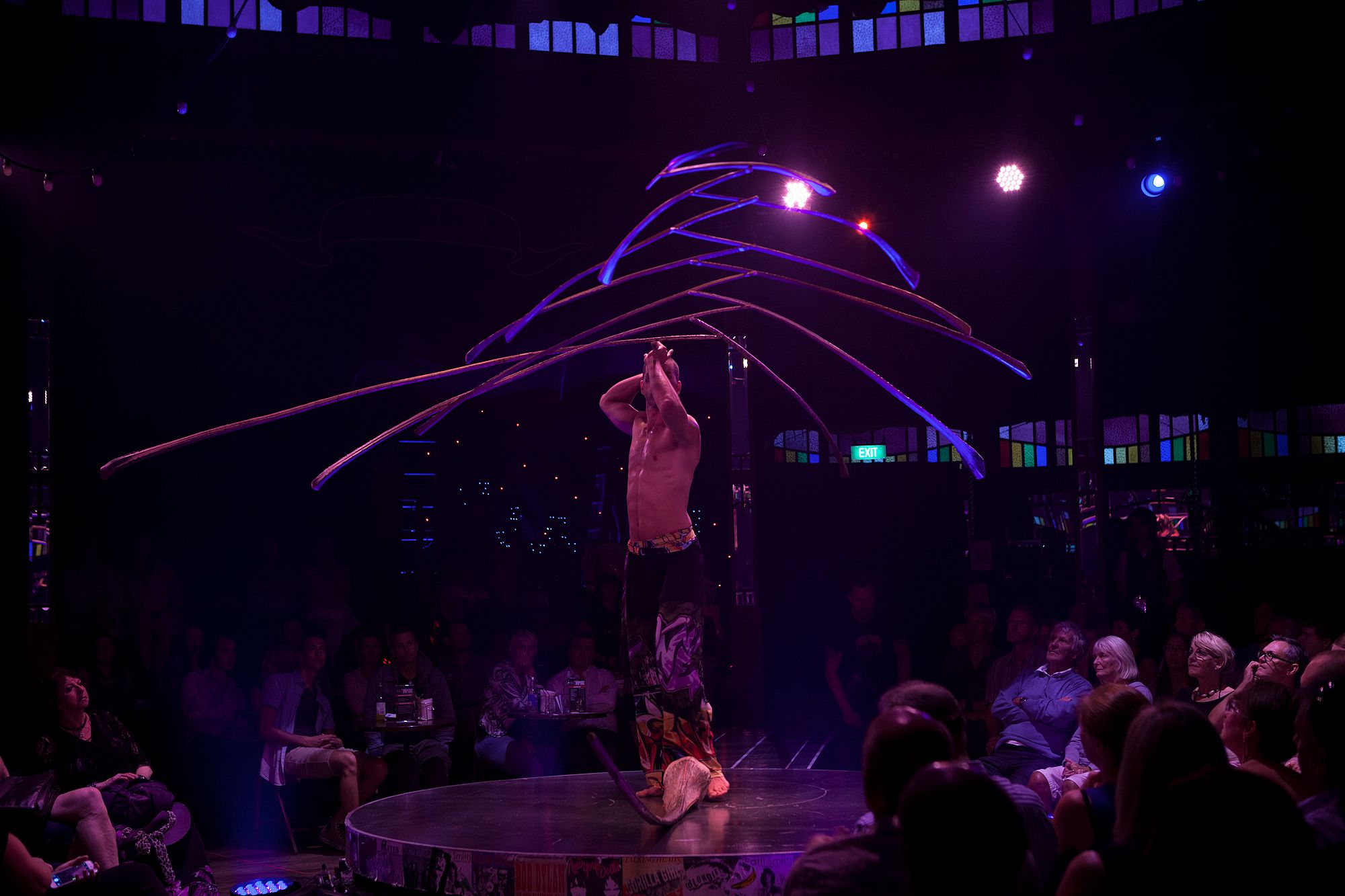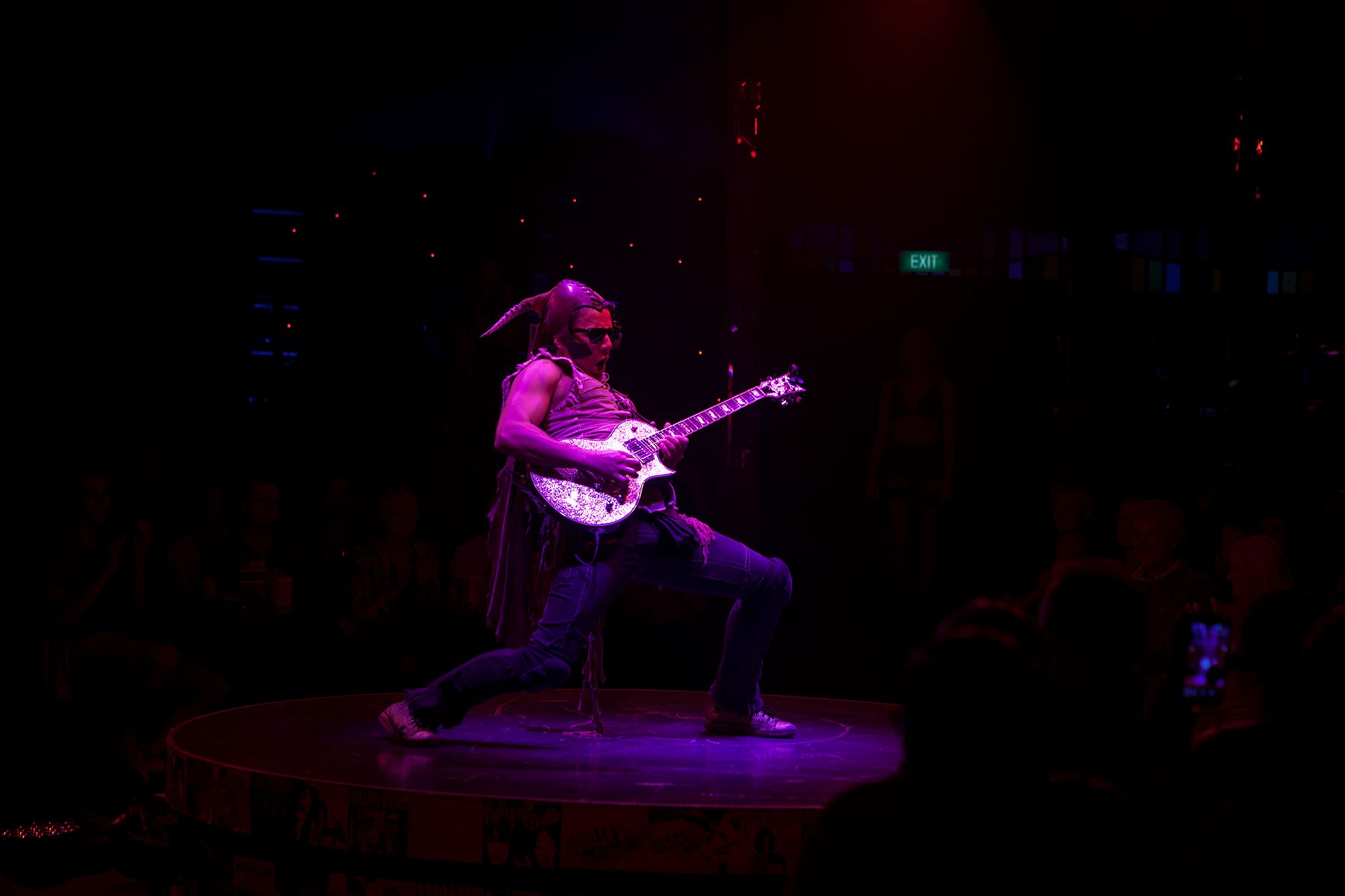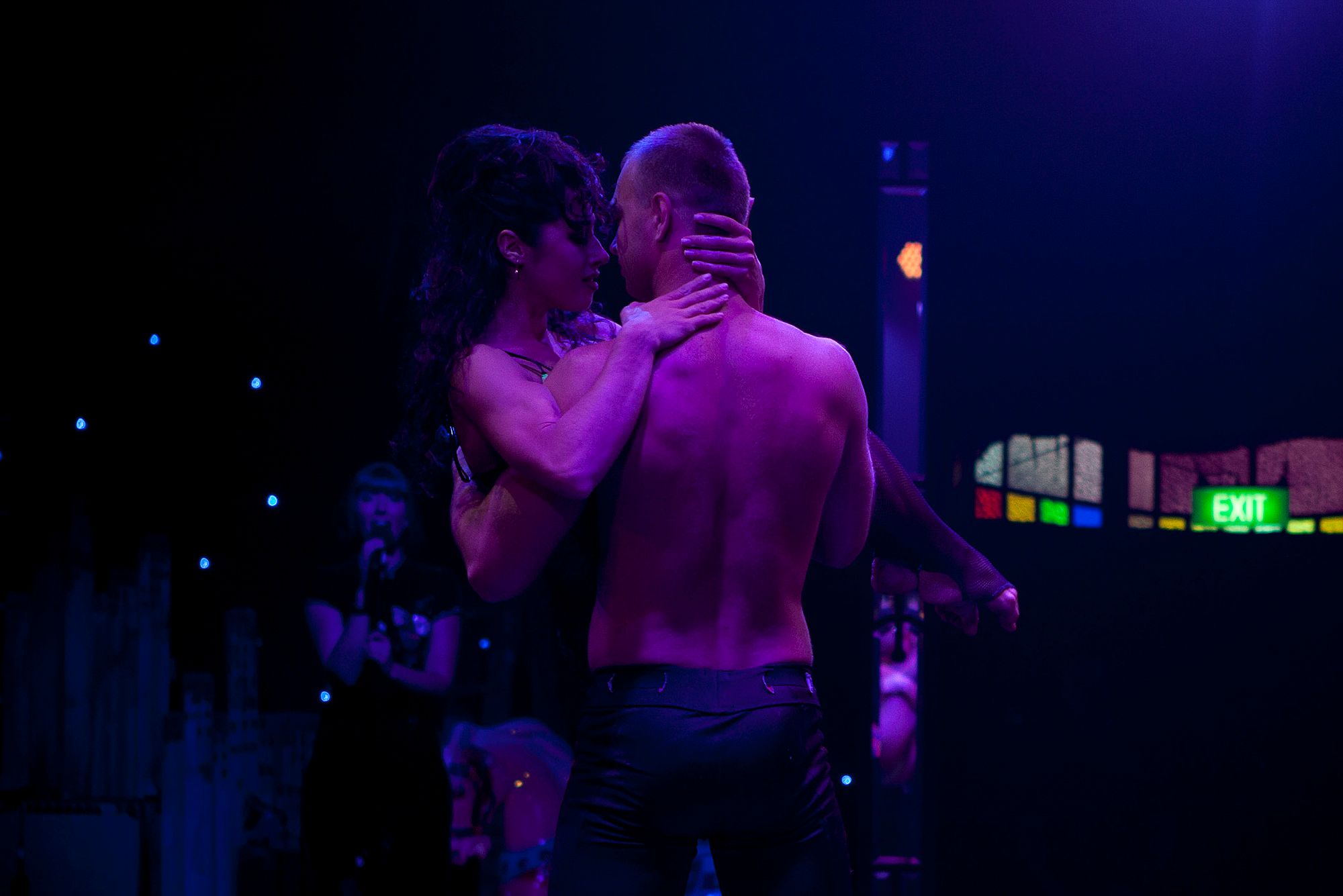A Space Between Street Corners And Symphonies
Kirsti Whalen runs away to join the circus.
I remember the circus as an afterglow. My fingers were sticky with candyfloss and my lips puckered pink with salt.
Striped tents plagued the local showgrounds throughout my youth, and even after I had ceased to enjoy the show itself (pint-sized animal rights activist as I was) those primary-coloured marvels still held some sheen, some allure.
Something always seemed to happen when the circus was in town, at least in the books I hoarded. It’s difficult to recall the precise details of each of my beloved childhood characters’ circus stories, because the big top was a ubiquitous foundation of mystery and escape. Pinocchio was abducted by the Great Marionette Theatre; Madeleine chose to abscond into life in the ring.
And so - perhaps like every child – I would hurl my aspirations at my parents in fits of rage. It seemed natural to rebel into a life on the flying trapeze. I’m running away to join the circus, I would scream, when really I was running away to sit beneath the flax bushes for the twenty minutes I was certain it would take for them to miss me.
But I imagined the statement into fierce arsenal, and imagined that it could be true. Surely any outsider, done with this taxing life of school and quilted suburbia, could find a home amid outcasts. Surely I could learn to be bold and brave and strong and funny, just like the performers I had come to believe were my kin.
The cast of Empire, the noveau-cirque currently in town, did just that. Hailing from a variety of countries across the globe, they’ve found their current home in the traveling Spiegeltent now installed in Auckland’s Wynyard Quarter. It’s not billed as a circus per se, but rather a mash-up of the traditional stunts and flamboyance with comedy, vaudeville and burlesque, all strung tentatively on a narrative nod to New York. It makes for a raunchy, dazzling show, where they have a place to display some fairly unique skills, including aerial roller-skating, branch balancing, acrobatics and a pair of bawdy but hilarious clowns.
It’s spectacular. But by now, I’m spoilt for spectacle: Cirque du Soleil reached these shores when I was in my preteens. It was new, exciting and broke the boundaries of what a circus could mean: contortion, now abundant in stage and talent shows alike, was a novelty. A clown, stripped of greasepaint and pandering, was deconstructed until he was a figure caught in a snowstorm of light. Or, at least, that’s how I remember it.
In fact, that clown is the only thing I do remember from the first Cirque du Soleil performance I saw. It was at least twelve years ago: I peered from behind the pole of the tent (affordable seats afforded limited views), wondering why he had shed his guises of hilarity and horror to become so very sad.
But Empire feels very much post-du-Soleil: it’s sexier, more intimate but inevitably in the shadow of this talented older sibling. The comparison looms on the lips of reviewers, attendees and cast-members alike, though without Soleil there would perhaps be neither room nor enthusiasm for the knickers-down-tongues-out romp that is Empire.
There’s been little sober academic study of the evolution of the circus, perhaps due to the whimsy of the form itself - the history of delight is inherited with hyperbole, painted in bold stripes and narrated by a booming ringmaster’s voice.
The question that arises from any circus-style act, however, is why? Why must man place his head in the jaws of a lion? Why should clowns be assaulted with cream-based treats? Why, in the case of Empire, must Tarpaulin Man and The Polka-Dot Lady defy gravity on roller-skates, chained at the neck? And why do I want to watch again and again?
Memet Bilgin Rigolo, arguably the star of the show, answers me succinctly. “There’s no reason for any of it.” he says.
Bilgin Rigolo (aka 3D Graffiti Guy) closes the show with a fifteen-minute feat of breath, in which he layers palm ribs of increasing length beneath a single feather, all held up purely by balance. It’s the slow exhale he releases on each bend to the floor that captures my attention and provides rhythm beyond the cadenced hum of the music, elevating the piece into a meditative exercise in control – of the shaking hand, the shuddering pulse. The closing collapse of the structure brings much of the audience to their feet. On the tiny, circular stage in the center of the tent Bilgin Rigolo is drenched in sweat, a relieved smile at his lips.
Bilgin Rigolo’s disbelief in any grand metaphor encompassing the act, and the circus itself, is refreshing. His performance is beautiful and clearly very difficult to execute, but described by the act’s inventor, from whom Bilgin Rigolo inherited his place in the show, as the work of a ‘shaman.’ This is a title that Bilgin Rigolo gently rejects, calling the act instead “something more spiritual than what we’re used to in this era.”
The word shaman isn’t so distant from charlatan, though. And despite the audience’s general awe I hear mutterings throughout the piece of notches, magnets, tricks. Bilgin Rigolo is aware of what gets said, though he says he isn’t able to hear during the performance, and is told by ushers and fellow cast members after the fact. “And I feel bad for the person saying that,” he says, “because what they’re doing is they’re moved by something and it makes them feel uncomfortable. Their reaction is to try and find a reason of how or why.” He would like people to engage with their ability to suspend their disbelief, if only for a moment. “It’s a sad reality of our current world that everything’s Photoshopped and everything you see on the internet and mass media has the propensity to be untrue. But that doesn’t mean we should stop having wonder for the world and being able to think that really amazing things are done.”
It seems a fairly linear progression, but there’s an air of intrigue to this composed, soft-spoken man, whose hobbies including free diving and the construction of a boat in which he one day hopes to circumnavigate. It’s easy to imagine him at odds with the IT world, though the single-minded concentration the branch balance demands, and the quiet ferocity of his demeanor, indicates he was always going to excel at whatever he channeled himself into.
Andy Bianco portrays obscure New York composer and guitarist Moondog in the show, and is almost the opposite of Bilgin in person. There’s an endearing, nerdy quality to his reverence for his character’s real-life namesake, embodied in his proffering of one of Moondog’s original compositions.
Indeed, the topic of Moondog himself excites Bianco into a breathless stream of achievements. He lists a lengthy discography, invented instruments, a string of rhyming couplets and symphony compostion among the accolades the so-called “Viking of Sixth Avenue” accrued. Blind since the age of sixteen, Moondog was a prolific producer of true originality, whose genius spent decades virtually unknown, buried beneath an unusual appearance and apparent homelessness.
When calling New York home himself, Bianco is a freelance guitarist, composer and producer. He came to the show, much like Bilgin, through a phone call from a friend whose run with Empire was up. As he describes it to me, the New York market is so saturated with creatives that most of the performers he knows are on the road. So, drawn to the character, the travel and the chance to perform something different and new, he joined the cast.
The live music is an engaging and inventive draw of the show, though it’s frequently interspersed with a recorded soundscape. It’s the characters Bianco and Ashley Loren (Miss Purple) play that seem most relevant to the narrative arc of Empire, through their portrayal of obscure New York personalities who previously enjoyed little fanfare. Appearance and behaviour derided in the normative setting flourish in spaces of inclusion – as it is with so may artists, so it is with a traveling band of circus geeks. Moondog’s reimagining in Empire seems fitting. A space between street corners and symphonies is filled with his memory.
Bianco maintains that he experiences a sense of the town he calls home through the performance. “When you’re in the tent seeing all these things about New York, it reminds me of home,” he says. “The subway signs and the sounds of the subway… you’ve got New York on you.” He indicates that in earlier runs the show carried more of a plot related to the city and its recent newsworthy events; now, the relics of this narrative structure (pizza boxes, the odd sign, a few plastic skyscrapers) can feel abstract, at best disjointed and at worst gratuitous.
What could also be read as gratuitous is the show’s overt sexuality. Each woman is clothed in some class of an undergarment, while both the hosts, or clowns, are essentially nude at some point during the show. When the ‘Gorilla Girls,’ the Banquine (acrobatic) trio, first emerge into the tent they are greeted by wolf whistles and, across the tent, a man visibly panting. There’s a moment in the show in which some of the male cast members appear to slip cash into the Gorilla Girls’ costumes, which makes it harder to see this as a post-modern art piece, rather than a nod of indulgent nostalgia to a less ‘PC’ time. It’s difficult to discern whether this is an ironic observation on depictions of womens’ bodies or a cheap moment of misogynistic pleasure.
How sexuality then gets unpacked within the Spiegeltent is, however, progressive. In an audience-interaction piece Anne Goldman (Fanny) inserts her hands into her underwear to form the lips of her rampaging monster-vagina, booming something to the effect of “I’m coming to get you” through the microphone. It’s funny but it’s pointed; Goldman riffs on feminist tropes as she removes her hairpiece and accouterments in a deliberately clumsy undressing, deadpanning “this is reality” to the blushing man drawn from the audience to be embroiled in the act.
Circus scholar Paul Bouissac describes the clown as a outsider figure, whose standing, much like that of the court jester, allows the delivery of uncomfortable truth. “Questioning the social and moral norms entails serious risks of being ostracized, jailed or entrusted to mental institutions,” he writes. And yes, licking the heads of members of the public (who are then dragged onto stage and forced to inhale the aroma of Goldman’s shoe) could be ostracizing. “Clowns can do this within some limits,” Bouissac continues, “because their status already classes them in the margins of society.”
I ask Bilgin Rigolo if the extent of the clowns’ daring interaction with the viewers is based on trying to break down some kind of sexual taboo. He theorises that it’s indicative of a previous era, in which the wall between the audience and the performer was far less present. “It is profoundly about having a relationship with the audience in that sense… I think they’re doing it because this is the history of the medium.” I think they’re also doing it for cheap laughs, but sometimes it’s fun to watch an unsuspecting spectator have his head licked by a man dressed as the Statue of Liberty.
The roller-skating duo, too, are a raunchy pair. They kiss aggressively between their (terrifyingly impressive) tricks. It’s the woman of the duo that places the looped device, not dissimilar to the furry handcuffs found at every adult store, around each of their necks before the most dangerous piece. The light BDSM overtone of the staged masochism is thrilling and dramatic, and doesn’t feel misplaced.
Though the Gorilla Girls’ display pinches at my feminist nerve, it’s also a form of sexuality built on strength. Their bodies are layered and lifted in an exhibition of muscle that is almost inhuman. And the sheer closeness of the space allows the piece to feel fresh. I’ve seen contortion and acrobatics many times, but never quite brought into its exceptionality – from behind a television screen, or on a distant seat in a sprawling tent the body is just another moving shape; the feat is one of casual ease.
“We’ve lost the faith than humans can do such things,” says Bilgin Rigolo. “It breeds this cynical, jaded, passive world view.” He describes the difference between seeing a good magician and a so-called ‘hokey’ magician – the good magician does not trick you. They simply achieve something brilliant. Do something that you could not. Extend their ability beyond that of the layman. Therein lies the magic.
“What if it’s actually what it pretends to be?” he asks. “Have you ever played with a spin top when you were a child? Have you ever thought of playing with a bigger spin top? Have you ever thought of playing with a huge spin top? And let’s see what happens.”
He’s talking about one of his acts, but could easily be referring to the show as a whole. What if these motley, talented oddballs are simply the kids who made good on their threat to run away and join the circus? Perhaps they allowed the nagging reverie of flight to persist.
They’re all exceptionally talented, world champions and accomplished professionals, but what makes the show the most appealing, even inspiring, is that each act is (despite appearances) intrinsically human. An acrobatic act becomes a story of unrequited love; a few sticks become an airborne ribcage inhaling with its master. The cast performs emotion rather than pure spectacle and at such close counters, it’s transporting.
And they clearly care a lot for each other. Which sweetens the danger just enough to warm the heart. They kneel at the edge of the stage during the more daring acts of their fellow cast members, eyes fixed on the tossed bodies in case of emergency. They spit banana into each other’s mouths. They look as if they’re having the time of their lives, and though there are fumbles and screeches and crass jokes, they’re living the (risqué version of the) dream of every kid entering the big top for the first time.
To confirm, I ask Andy Bianco if it every gets mundane. “Dude,” he says, “you realise this is a fucking circus, right?”
Speigelworld's Empire is performing at Wynyard Quarter until 15 February. For more information and tickets, click here.
